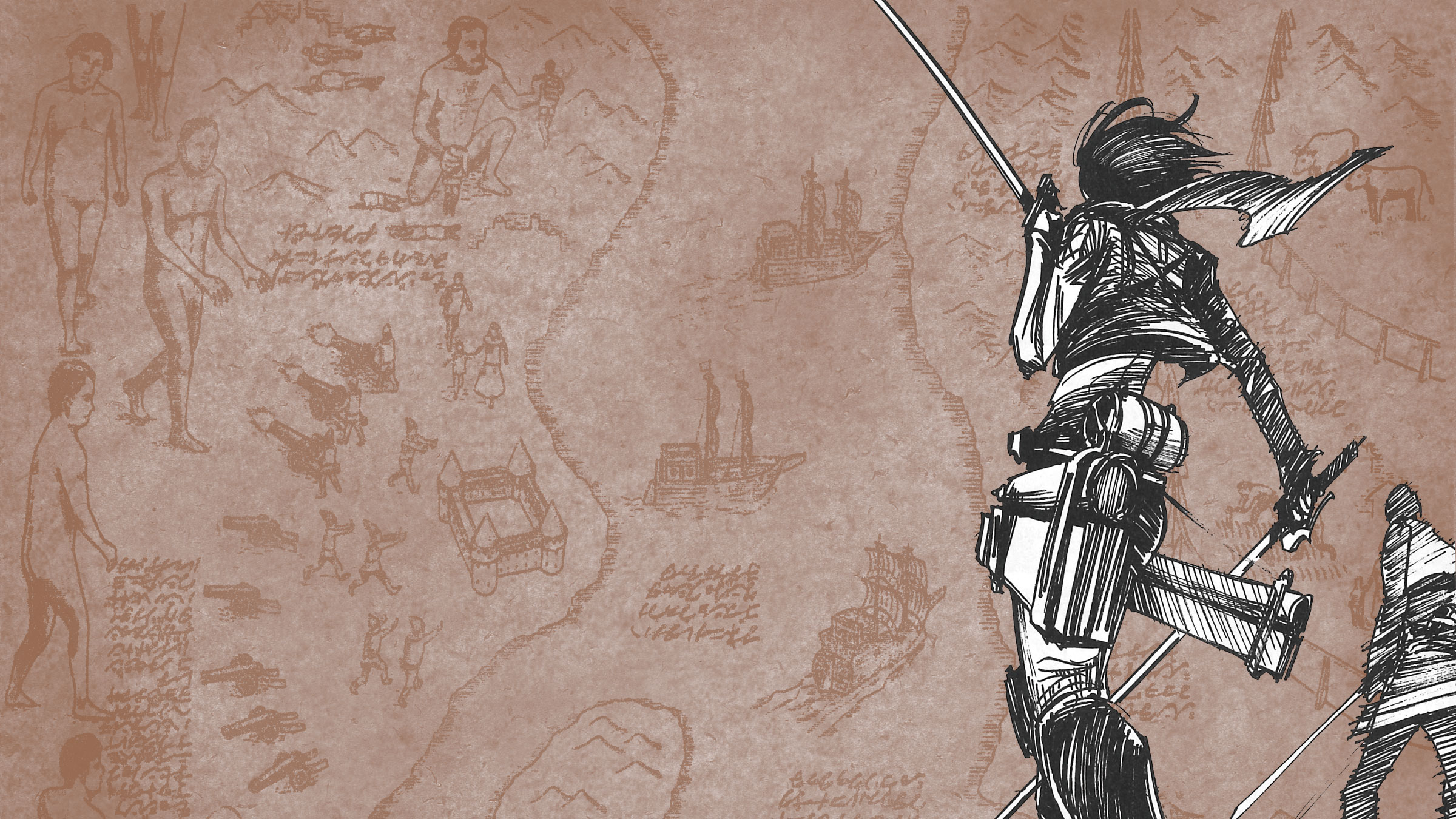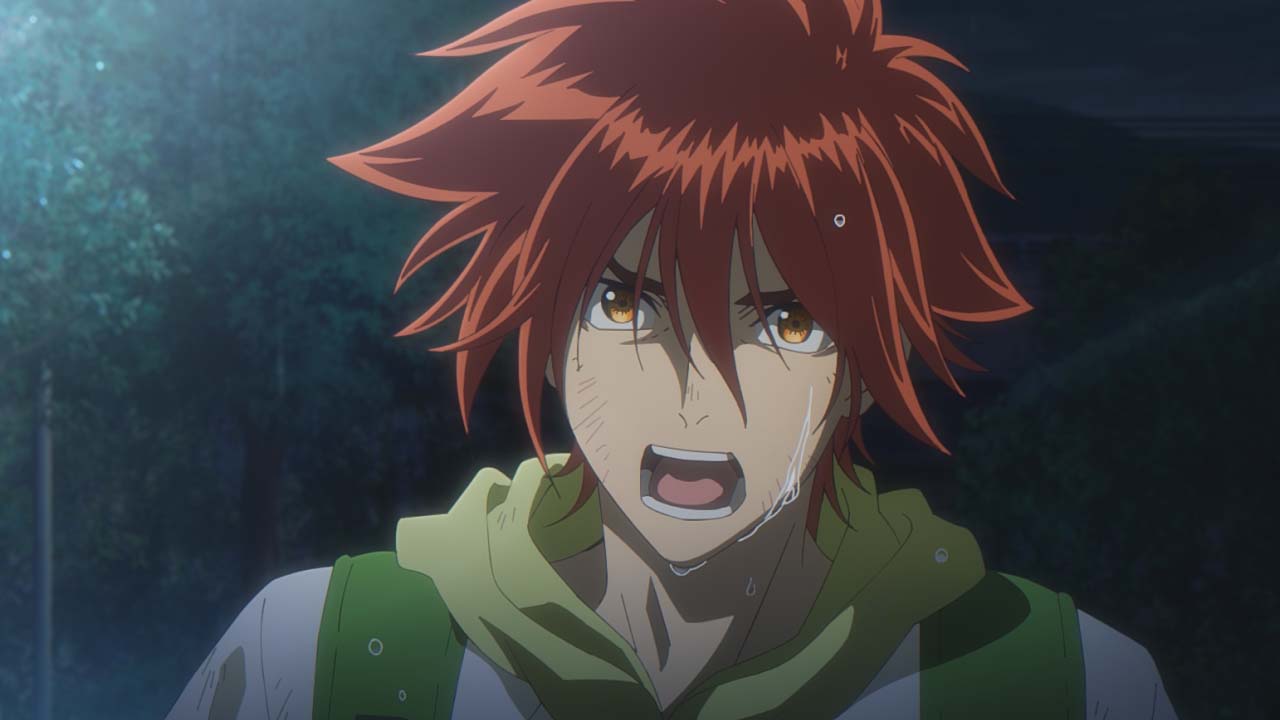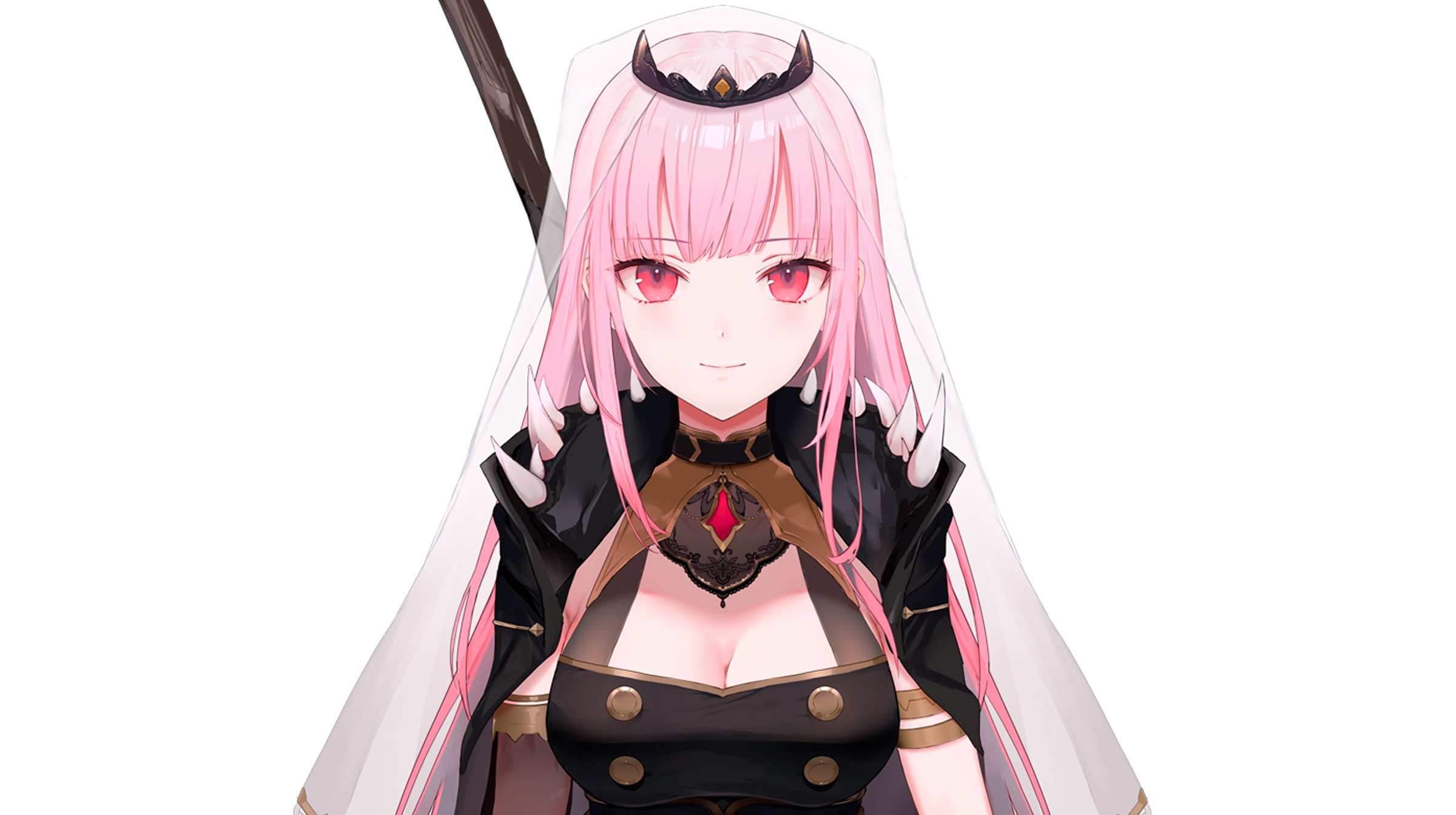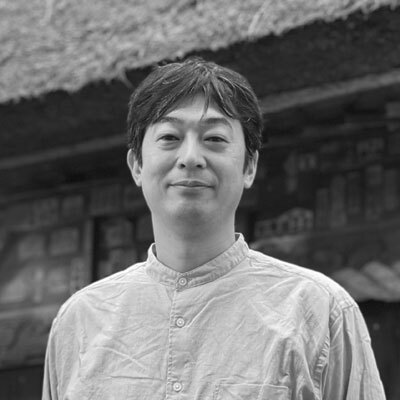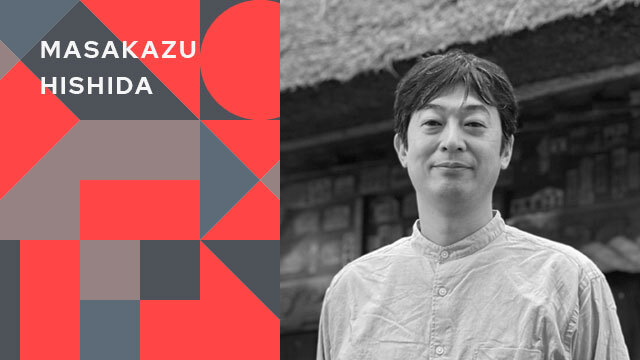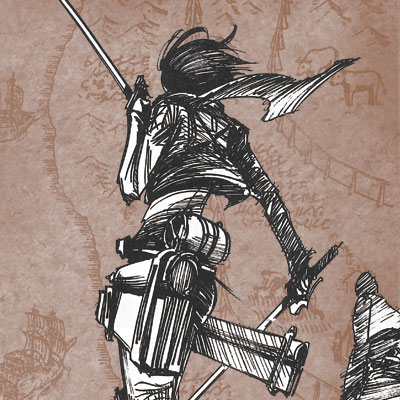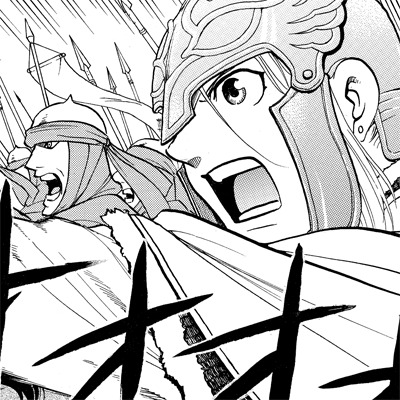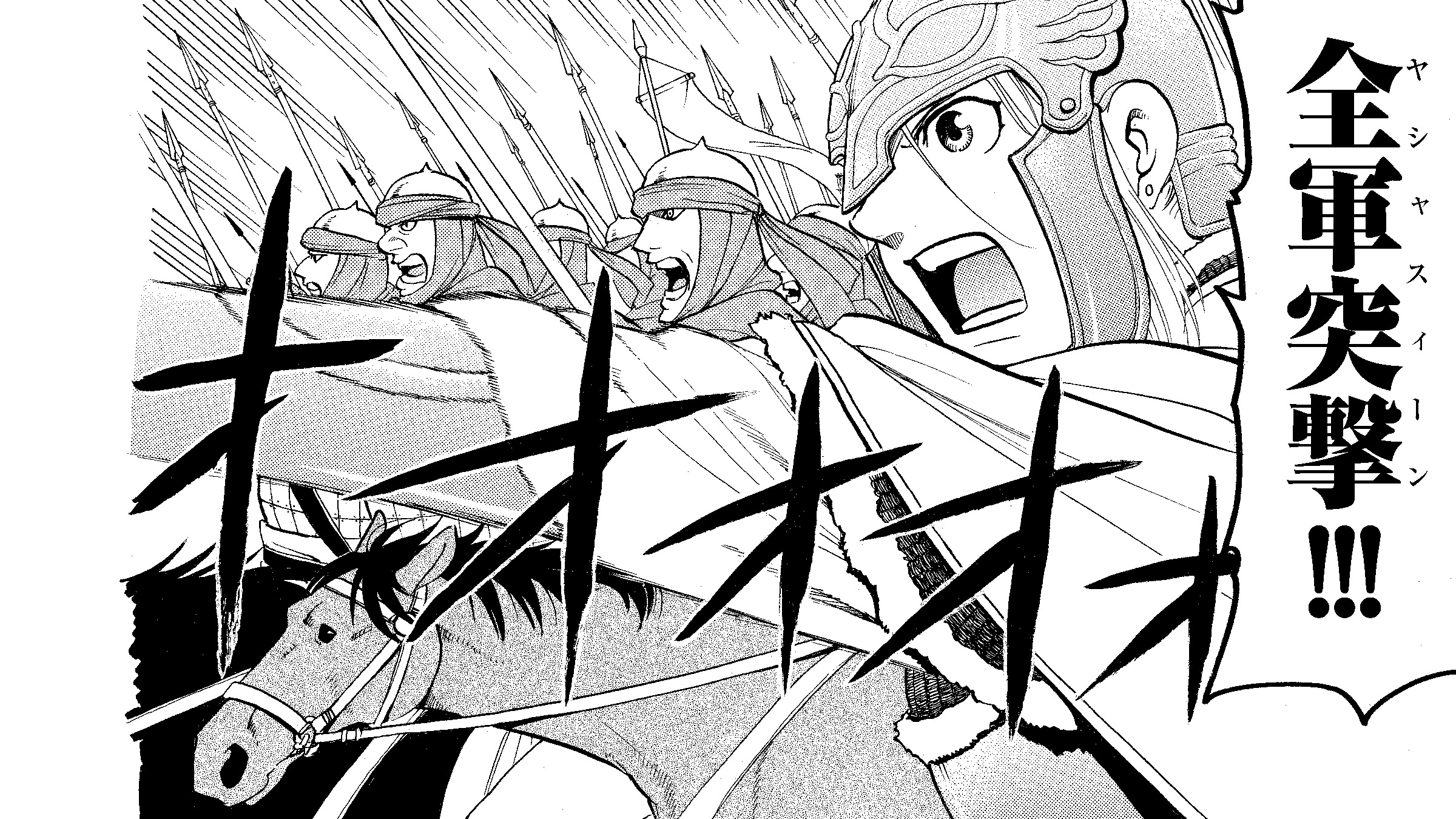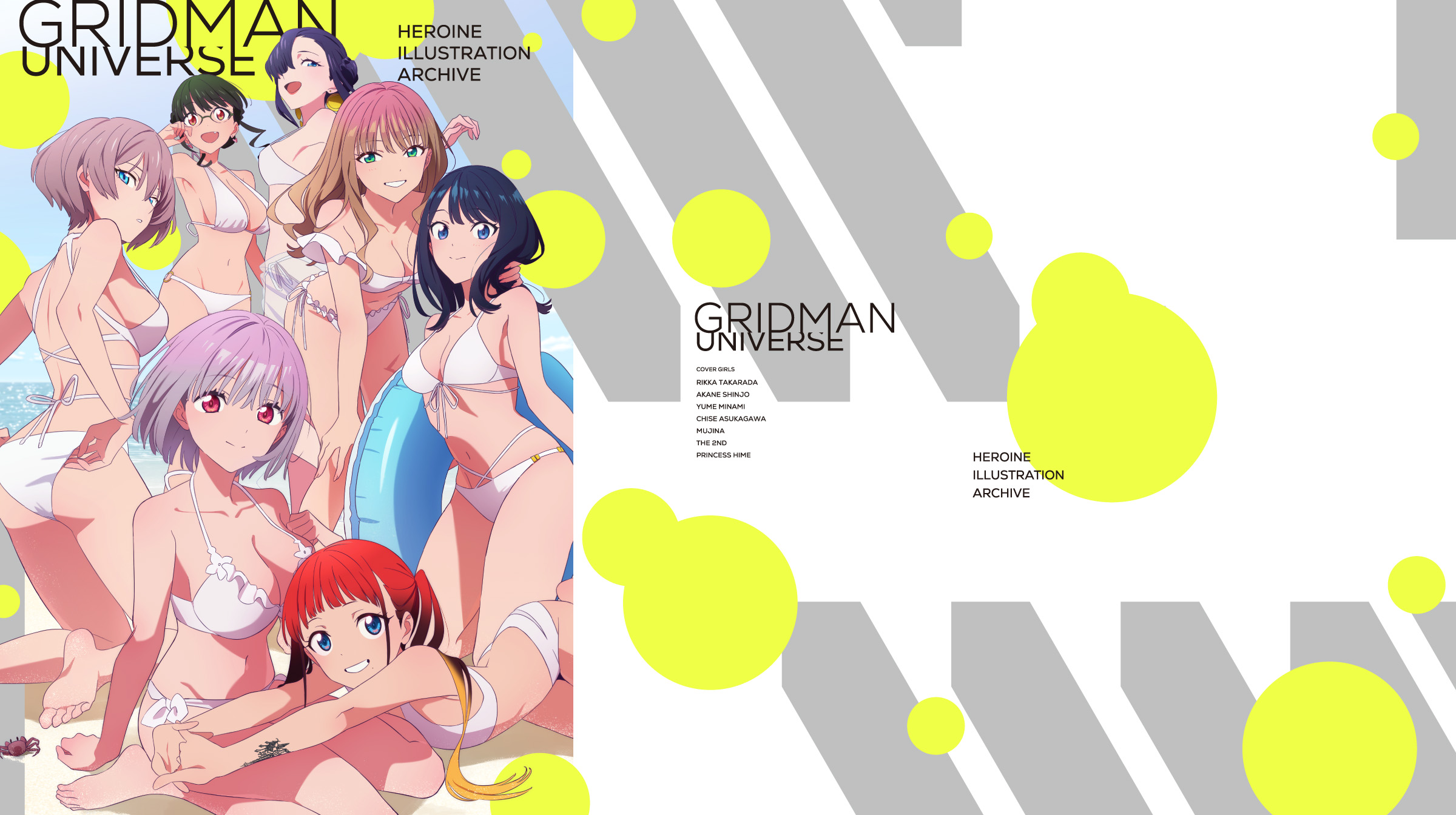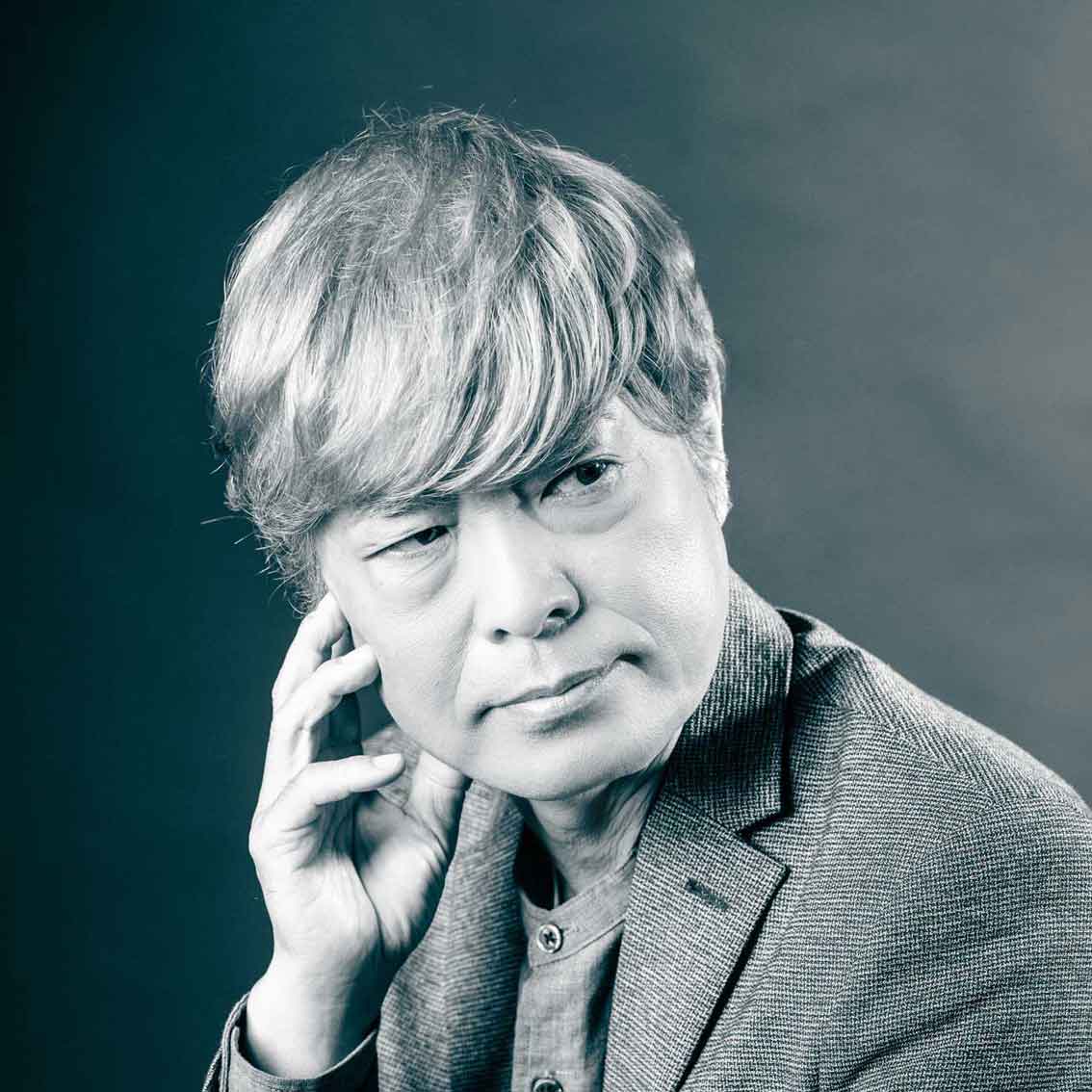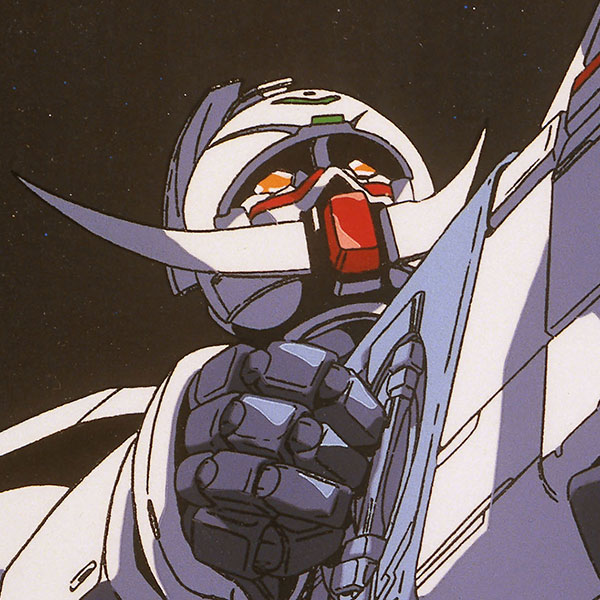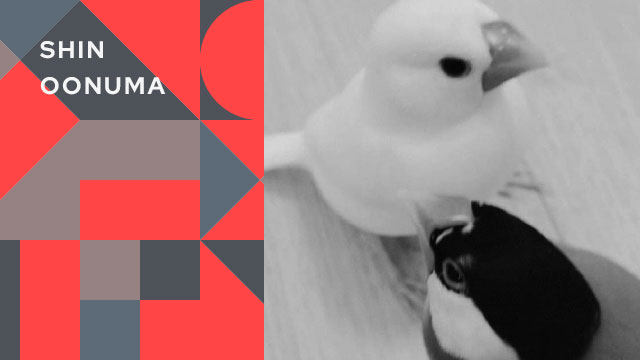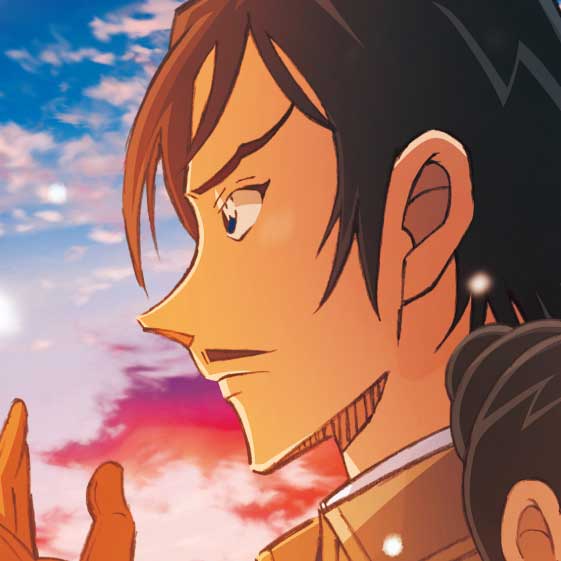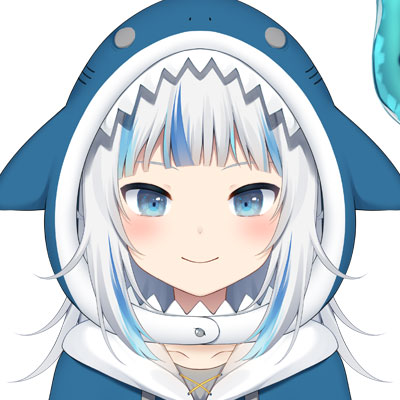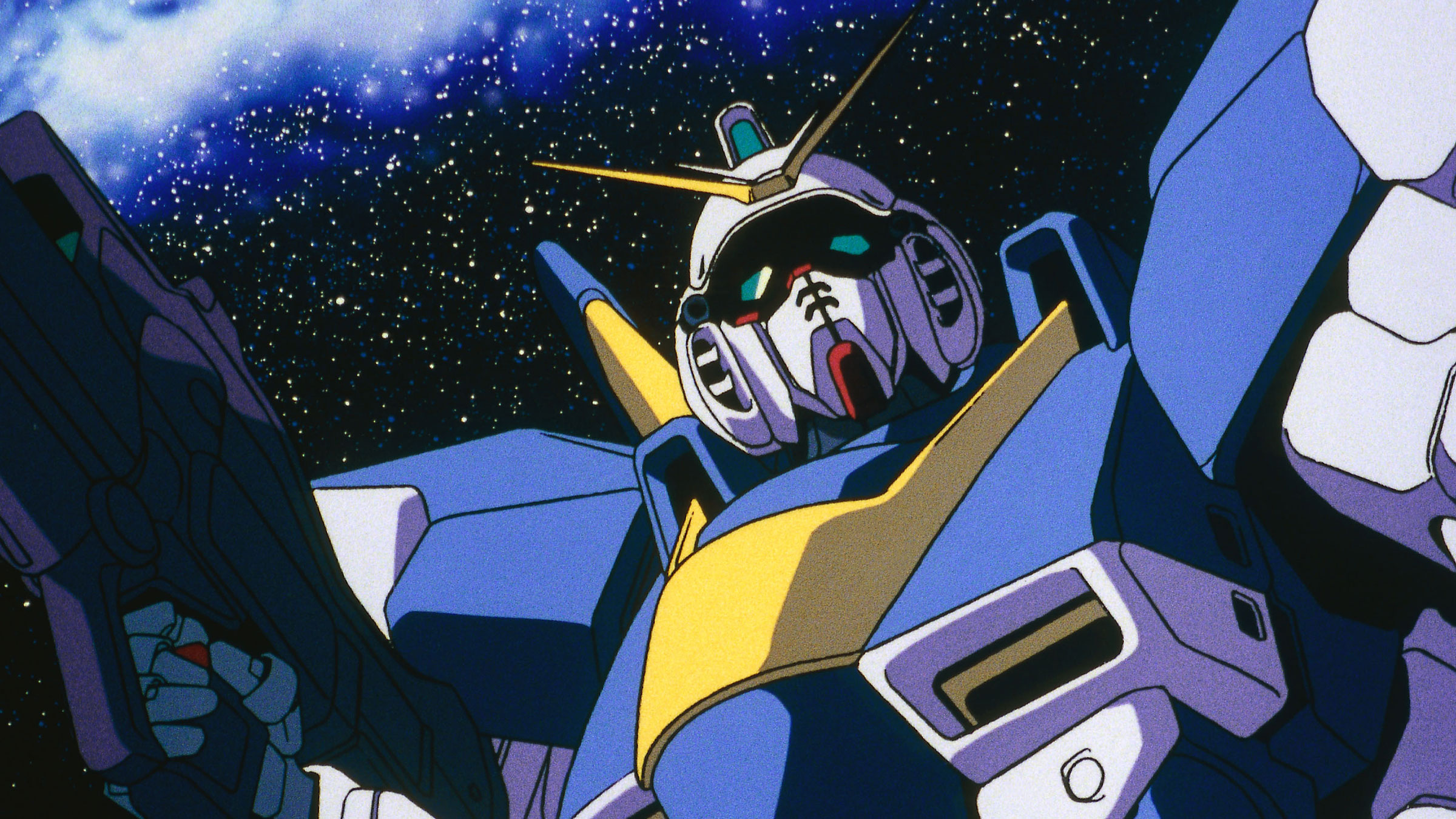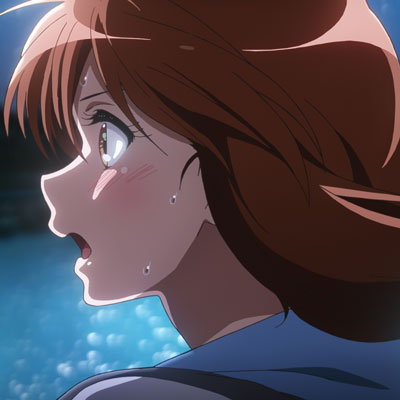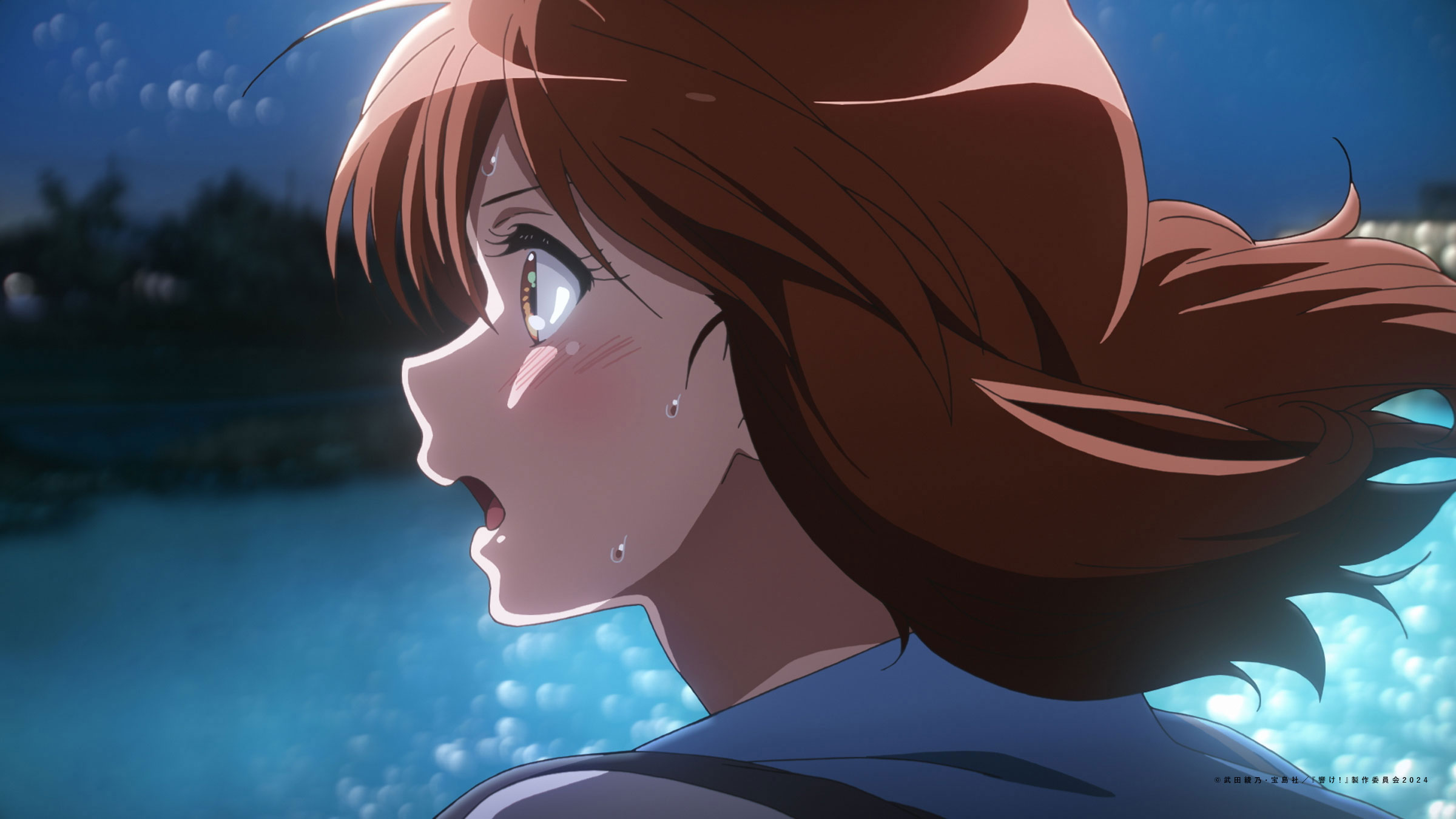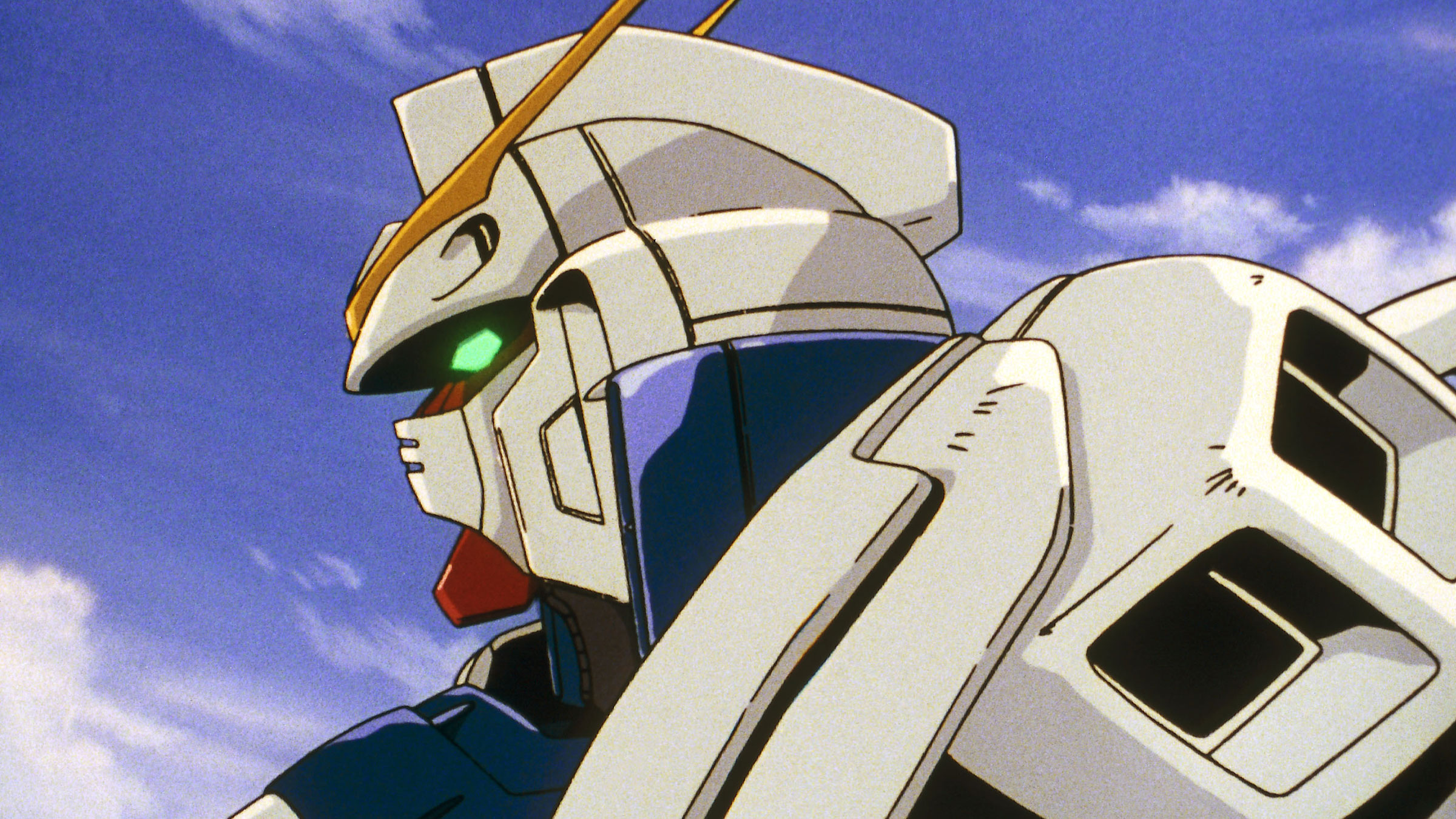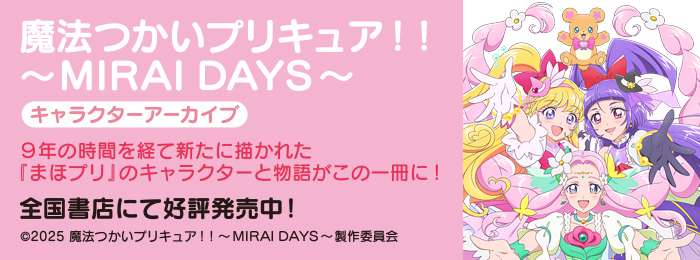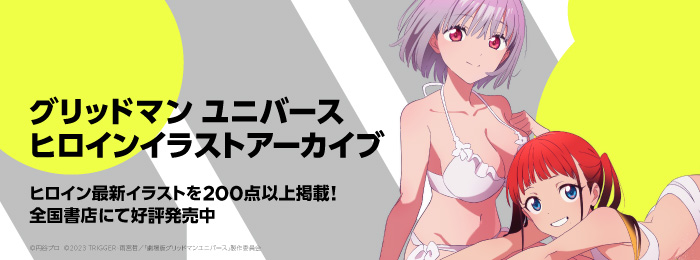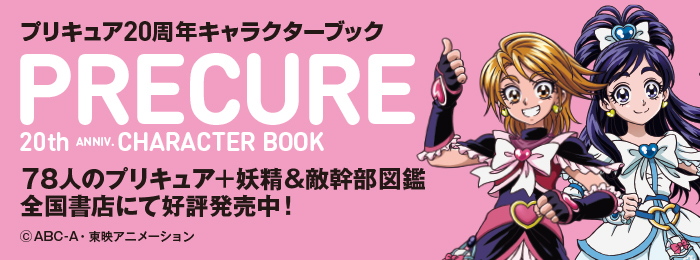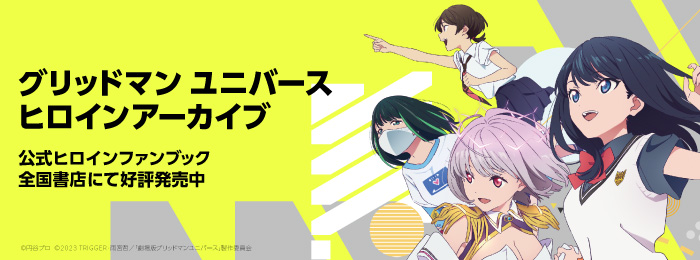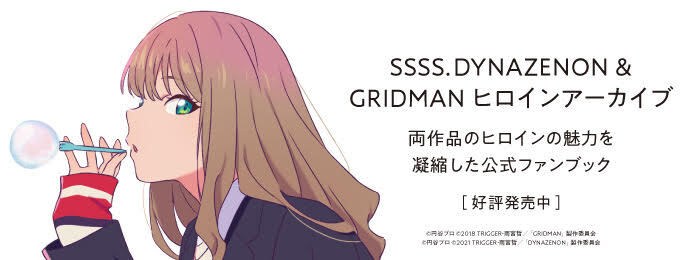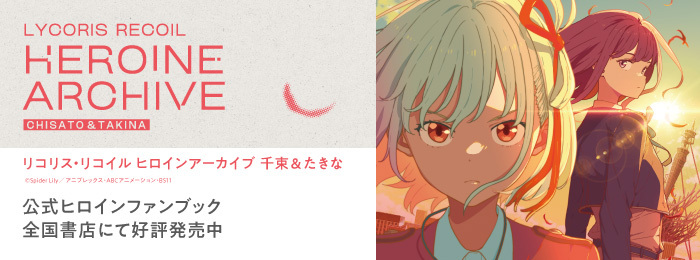“I’d say it was hatred”
―― I’d like to start by looking back on how Attack on Titan came into existence. How did you first conceive of the titans?
Isayama: As far as I can remember, I’ve liked giant creatures since I was in kindergarten and I spent all my time back then drawing dinosaurs. But as much as I enjoyed drawing these gigantic things, I simultaneously felt this fear of them. In Jurassic Park, there’s a really intense scene when a guy runs away from a dinosaur and hides in a bathroom, but the dinosaur just destroys the bathroom and gobbles him up, and I remember seeing that and being scared but also finding it strangely funny, in a way.
―― And that dinosaur eventually morphed into a titan?
Isayama: Yes. A big part of why the dinosaur turned into titans is because of an adventure video game I love called Muv Luv Alternative. In the game, humanity has been driven to the brink of extinction by a huge extraterrestrial lifeform called BETA, and I found the concept of being hunted down by an unknown creature to be both ominous and thrilling. Additionally, that humanity had already been reduced to critically endangered status in and of itself was intriguing. So that was one of the starting points for the world where humans are hunted by titans.
―― Initially, you first drew a sixty-five-page Attack on Titan one-shot and brought that to Kodansha, right?
Isayama: Correct. It just felt like part of the job hunt to me. That was when I met Mr. Kawakubo.
Kawakubo: I finally appeared in the story [laughter]. I was the one who accepted the Attack on Titan one-shot. At that point, Mr. Isayama was going to a technical college in Fukuoka, and he was in a program there that required submitting a piece to a Tokyo publisher.
Isayama: Right, since it was cheaper to go as a group, some classmates and I got together and made this sort of tour, where we went to Tokyo and stopped at several publishers.
―― Mr. Kawakubo, what was your impression of Mr. Isayama when he was a student back then?
Kawakubo: Let’s see… I can’t remember much in the way of what I thought of him personally [laughter]. I’d even say he hasn’t changed much since then. He’s usually pretty quiet, definitely when he’s in public, but even when it’s just the two of us, he doesn’t say much. He’s always been well-mannered, that’s one thing that hasn’t changed about him at all.
―― Okay, then, Mr. Isayama, what was your impression of Mr. Kawakubo?
Isayama: “Man, he’s young.”
Kawakubo: It was my first year with Kodansha.
Isayama: And also, “He looks really tired.”
Kawakubo: [Laughter] Sometimes he would get on the same elevator as me in the building as I was on my way to work. I knew that he was the guy who had submitted a one-shot, but I didn’t actually know him at all. You could say I was able to see his true form [laughter].
Isayama: Basically, Mr. Kawakubo and I both have low blood pressure.
―― I’m surprised that the both of you are so chill and in-sync with each other, despite the series being so intense. Were you caught off guard when Mr. Isayama submitted Attack on Titan?
Kawakubo: I remember it well, the story itself was intriguing, but more than that, you could feel a sort of energy in the drawings. Given that he was a student at a technical school, there was no comparing him to a professional mangaka, but there was something grabbing at your emotions from every page, block, and line. This may sound like an exaggeration but, I’d say it was hatred. It left a strong impression on me.
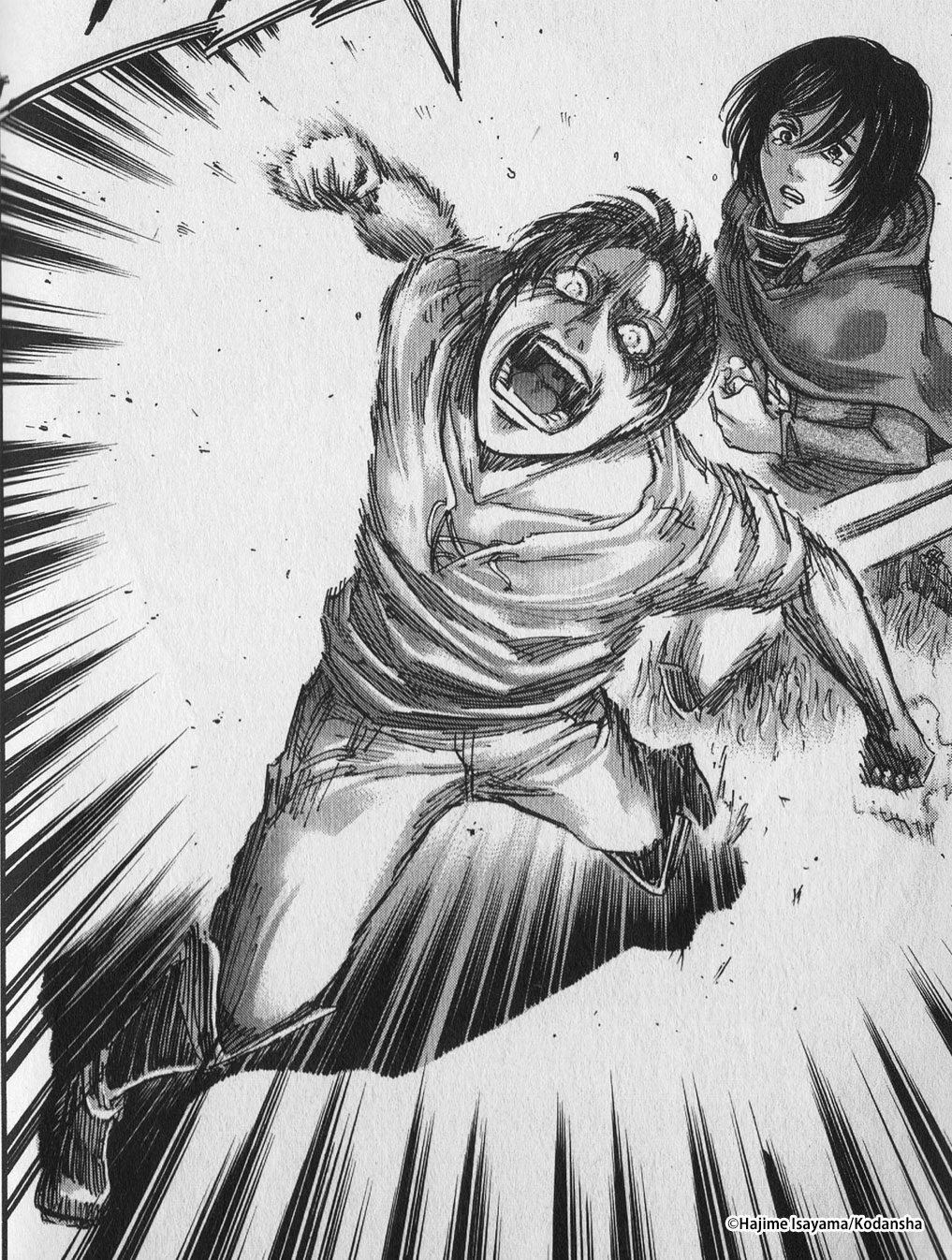
―― So, it wasn’t so much the concept of ‘titans,’ as it was the images.
Kawakubo: Yes. It was still my first year since entering the company, and I had only been assigned to the editorial department that June. Mr. Isayama approached us with his one-shot in July, so I hadn’t been reading manga as a professional editor for even two months at that point. I hadn’t gotten to the level where I could analyze or appraise a manga as an editor, and that is why I think perhaps I was right on the money when I felt a vague sense of hatred in the artwork.
―― Three years would pass before Attack on Titan would be serialized in your magazine. What did you do during that time?
Isayama: Mr. Kawakubo told me to try winning the (Weekly Shōnen Magazine) Rookie Award, so I temporarily stopped working on Attack on Titan and made an entirely separate story.
Kawakubo: His Attack on Titan one-shot first got an honorable mention award in the monthly Manga Grand Prix held by the magazine’s editorial department, and I was the one overseeing the Grand Prix. Still, though, since it’s tradition to serialize the winner of the Rookie Award in the magazine, I told him to set that as his goal.
―― And that was why you wrote Heart Break One and orz. Both of them won the Rookie Award. And once you had those wins under your belt, you were able to reach your goal of being serialized.
Isayama: According to my memory, though, the story that was serialized had been pushed to be serialized even before it got the award, right?
Kawakubo: When orz was completed, I was so sure that it would win an award that I suggested we start thinking about plans to serialize even before the results were announced.
―― And were those plans to serialize for Attack on Titan?
Isayama: No, I had initially made around three plots for completely separate works. You could say I had totally forgotten about that. As far as I was concerned, that was done with once I had approached Kodansha. But when I was talking with Mr. Kawakubo about the three new plots I had in the works, he asked if I’d want Attack on Titan serialized, and then I remembered it after all that time.
―― What made you choose Attack on Titan, Mr. Kawakubo?
Kawakubo: Hmm, I wonder. It wasn’t as if I thought the new plots Mr. Isayama suggested were bad. I thought they were quite interesting, but for some reason, once I had read it, I couldn’t get Attack on Titan out of my head. When I asked if there were any hidden backstories that could be serialized, he said he had actually been thinking about just that and presented me a few scenes right there on the spot. I requested then that we proceed with that.
Isayama: After I had that discussion with Mr. Kawakubo, I came up with even more scenes on the train ride home. What those scenes expanded into is the current Attack on Titan.
“I was really bad at drawing the characters”
―― Now that the series has been serialized for eight years, has anything changed from what you wanted to depict at the beginning and what it is now?
Isayama: In the beginning, what appealed to me was this framework of humanity being hunted to near extinction by man-eating titans. Like something out of The Village or The Mist. That, and since I’m a fan of mixed martial arts, I also wanted to draw the titans in hand-to-hand combat with each other. And not like stage combat you’d see in professional wrestling or Ultraman, either —I wanted to draw honest-to-god fights using logical moves you could kill someone with. But then, once I had drawn a few scenes like that and I got the urge out of my system, I realized I didn’t actually want to do those all that much [laughter].
―― [Laughter] So then it wasn’t the human characters but the titans that were the focus of the ideas in your head?
Isayama: Exactly. To be honest, I hadn’t given the character all that much thought. Now, though, Eren, Mikasa, and Armin basically are Attack on Titan, so at some point I feel that the characters got bigger than the titans.
―― Why was it that you didn’t think the characters would be very important?
Isayama: It wasn’t so much that I didn’t think they were important, as much as I was really bad at drawing them in the beginning, and I realized that they were my weak point. Of course, I sensed that I needed to make likeable characters, but never did I think that they’d grow into the characters they are now. I’ve learned to like drawing characters while drawing Eren and his friends, and now I don’t feel like I’m so terrible at it.
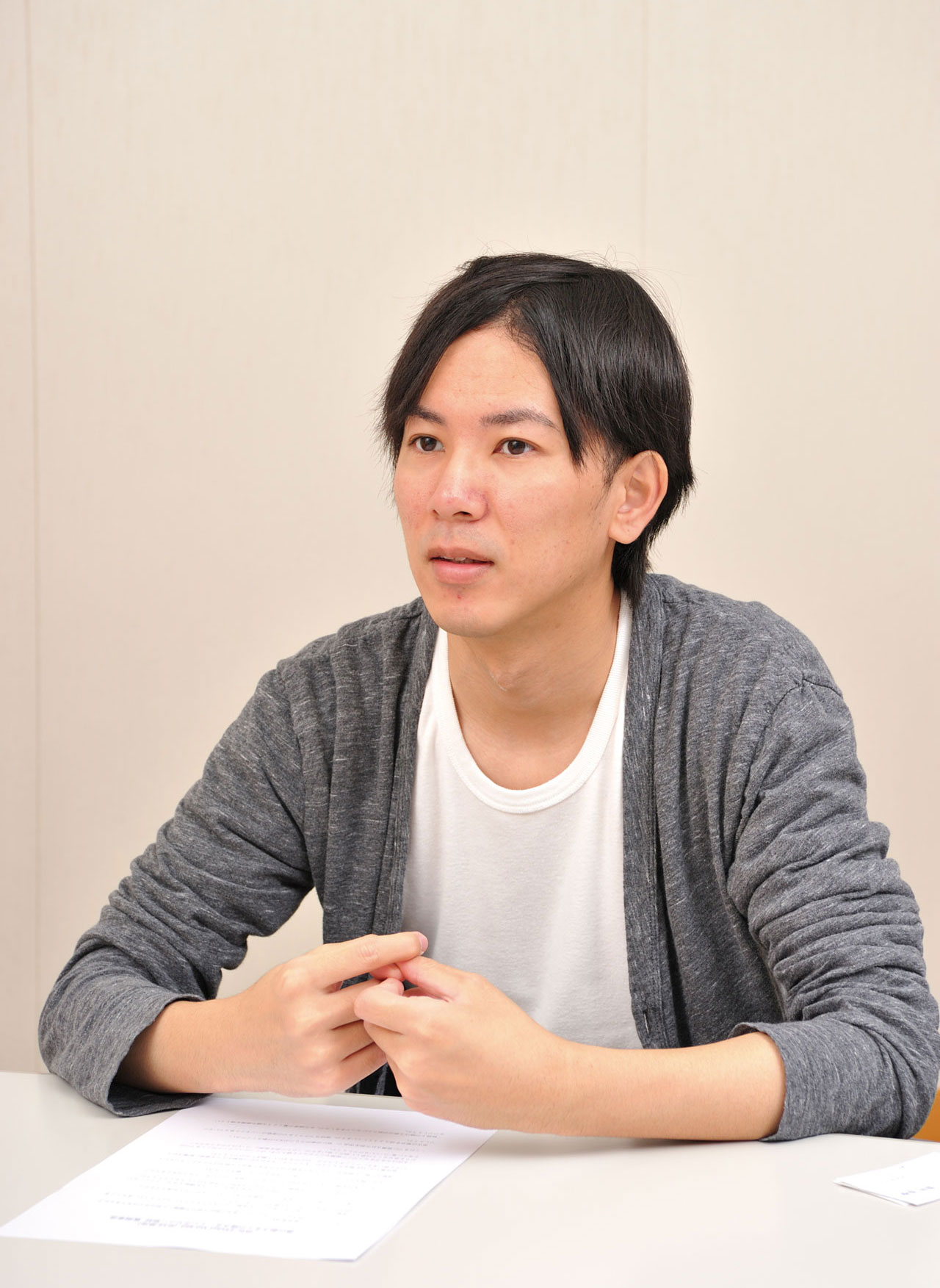
Original author: Hajime Isayama
―― Since Mr. Kawakubo is in charge of overseeing the series, what sort of influence does he have over it?
Isayama: He basically asks a lot of questions about the plot, rough drafts, and whatnot that I submit, and then after that, it’s a lot of uncovering points and problems that I hadn’t thought all the way through. Usually, once I finish thinking of a story, I’m overconfident in myself, so he’ll point out things that don’t make sense [laughter]. But then a day will go by and I’ll re-read it and think, “Oh, he’s right.” That’s why now I don’t put a lot of trust into my feelings immediately after I’ve drawn something. I’d argue that an author who does that has too much confidence in themselves is extremely out of touch with their readers.
Kawakubo: I’m not sure this is related, but I’m currently reading this book called Haruki Murakami: A Long, Long Interview in which Mieko Kawakami interviews Haruki Murakami, and in it, Murakami says that right after you finish writing a novel, you feel like your brain is overstimulated and you need a cooling down period in order to make level-headed decisions. As soon as I read that, then I thought of Mr. Isayama.
―― Has something like that happened to you?
Kawakubo: Sometimes I’ll listen to his self-evaluation regarding a draft, you know, if he’s satisfied with it or not. When we do this, most of the time, he gives me an “I’m not sure, right now.” I usually do a bit of planning beforehand, so I’ll point out some things I’ve noticed or stuff I want to say, and regardless of whether he agrees with me or not at that moment, he’ll say, “I understand completely what you’re getting at. I’ll think over what I’ll need to do after I get home.” Afterwards, when he reviews the rough draft that came up, sometimes he reflects on why I pointed it out, and other times he’ll completely ignore it. I leave it all up to his discretion.
―― Would you say, then, that the story has changed significantly based on Mr. Kawakubo’s opinions?
Isayama: I try to forget the more traumatic memories as quick as I can [laughter], but he’s probably been the source of several changes, my memory of them is just faint.
Kawakubo: I forget things quickly, too, so I can’t say for sure, either, but up until volume four or five, I recall there being some drafts that I half- or completely rejected. We were both rookies back then and in a phase of desperately wanting to be qualified professionals, so we went through a lot of ups and downs together. Nowadays, there might be little things, but rarely any big changes.
Isayama: Oh, there was one recently. I changed the structure of the conclusion of volume twenty-two significantly based on his instructions. In the first bad rough draft, I completely left out what Eren’s main motivation was. Consequently, by re-establishing it like Mr.Kawakubo told me to, I came to understand on my own and I arrived at last at what Eren’s existence meant.
“I think it’s neat that Levi is this cocky little man”
―― Since you’ve worked with so many mangaka, Mr. Kawakubo, what would you say is unique about Mr. Isayama?
Kawakubo: Well, there’s some things I can say in public, and some things I can’t [laughter]. Of the things I safely can say, though, is that his real strength comes down to having a firm grasp on what is cool. Mr. Isayama might say differently, and I don’t know for sure how the readers feel, but the key word to describe him that comes to my mind is ‘coolness.’ He’s constantly pursuing coolness, or in other words, he gives off a strong feeling of not wanting to be uncool. Actually, if anything, that nuance might be stronger.
Isayama: You’re absolutely right. For as long as I can remember, the standard I’ve based my judgments on how I can keep from looking lame.
Kawakubo: And yet, it’s not as simple as you wanting to be a cool person. I get the feeling you admire cool people and dislike uncool people, and it has a huge influence on all your work. And because you haven’t wavered in that core ideal and have polished it, it has inevitably made your story stronger. Since authors all have their own different values, I think it’s fine if you focus on something else, but when it comes to Mr. Isayama, at least, his obsession fixation on coolness is definitely stands out.
Isayama: If that’s true, then Mr. Kawakubo’s standard must be cuteness [laughter].
―― W—What do you mean by that?
Kawakubo: My life revolves around how cute I think other people find me. My desire to not be disliked by others is much stronger than in most people [laughter].
―― Are the funny conversations that happen amidst all the stress and tension in Attack on Titan a result of Mr. Kawakubo’s placing a high value on cuteness then?
Kawakubo: Oh no, not even one percent of it [laughter]. It’s a purely personal preference, it hasn’t impacted the manga at all.
Isayama: But, you know, if you over-emphasize the cool aspects of something, it becomes uncool. I think that seeing them come undone, as if getting a kick to the back of the knees, is important, too. I think this also comes from the influence of Western film. Or, for example, at the beginning of Breaking Bad, it starts with a middle-aged guy flailing through the desert in just his whitey tighties. Now, at first glance, the fact that he’s only wearing his underwear is uncool, but I thought it was cool. I thought that presenting the show’s central concept up front like this was excellent.
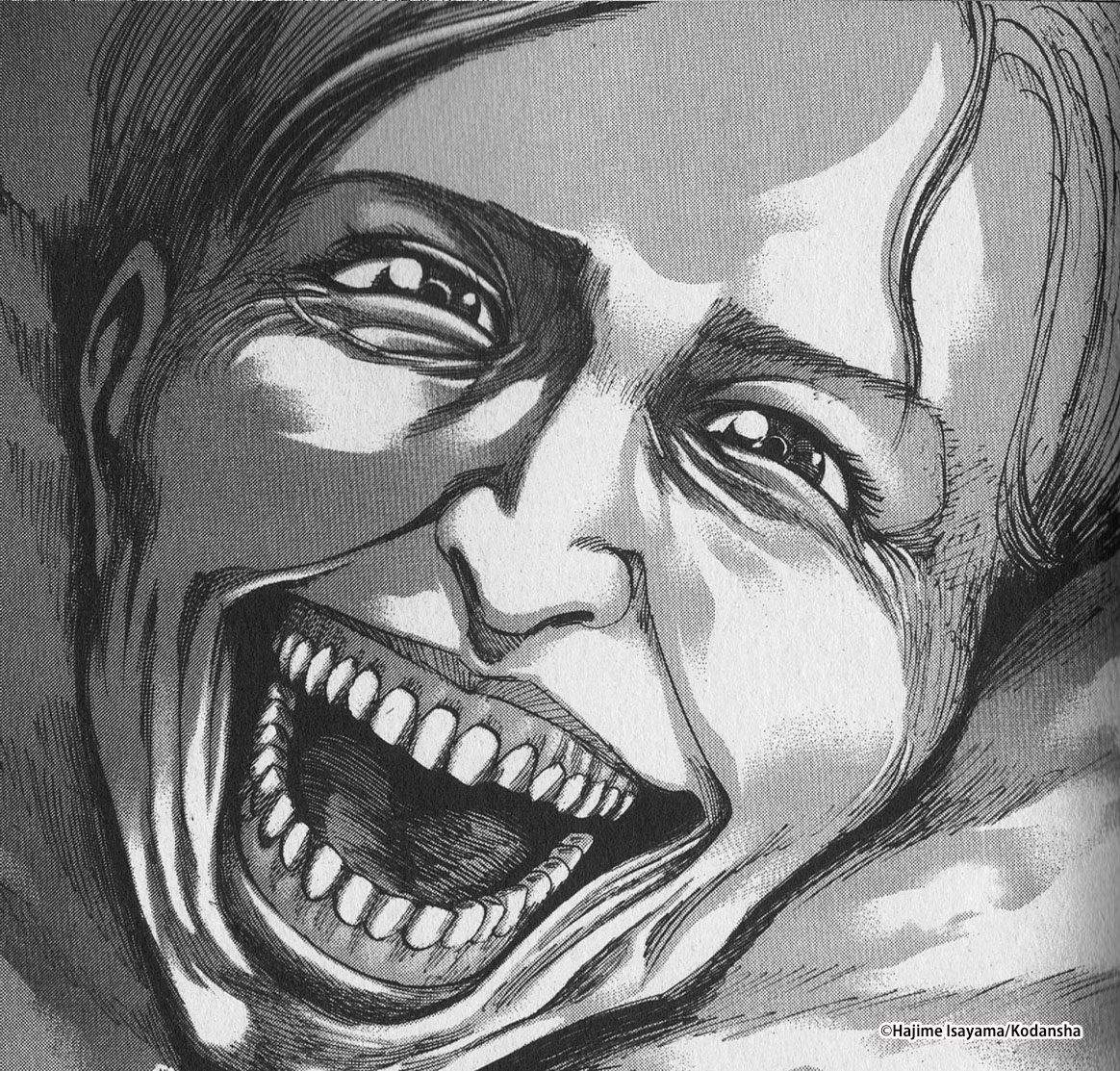
A titan appearing in volume ten. Drawn with much emotional intensity, it gives off an overwhelmingly uncomfortable feeling.
―― You’re saying, rather than a superman type of character who just mows down enemies, a weak character who is brave is cooler?
Isayama: Yeah. So, and this is just my opinion, if Levi was 180 centimeters [six feet], he wouldn’t come off as cool to me. That he’s this cocky little 160-centimeter [five feet, three inches] man is neat to me. He wouldn’t come off that way if there wasn’t a bit of something pathetic in him. I’ve tried to make all my characters with something like that about them. Just the other day while I was listening to the radio, they were talking about how imperfections make an idol more beautiful, and I was like, ‘Huh, they’re right.’ In other words, no one’s going to root for a flawless idol. And because people equate imperfection with inexperience, this leads to them feeling sympathy and wanting to see the idol succeed. I couldn’t help but feel like the same went for characters. Naturally, if you pursue absolute perfection, what you are going to get are very black and white values like in a Takarazuka musical, and Attack on Titan is nothing like that.
―― So, in other words, Levi absolutely has to be 160 centimeters.
Isayama: Exactly. There’s a character in Watchmen called Rorschach and he’s a short middle-aged guy, too. He shows off, running around and kicking ass with his little hands and feet. It’s really striking to see.
―― Contrary to characters who are aware of their flaws, what methods of drawing have you kept in mind when drawing the titans?
Isayama: I’ve been doodling giant creatures since I was a kid, but everyone else has always told me they’re creepy [laughter]. So, I guess that characteristic stands out.
―― I think what makes the titans so off-putting lies in their expressions. How you do get those expressions out of them?
Isayama: I try to draw in a way that over-accentuates eye-catching expressions that people normally only show for a second. I want to draw, like, how when you’re watching a movie and you see someone with an interesting face, they inevitably catch your eye. Actually, there’s been one occasion when I’ve been frightened by a titan. I think it was right around volume ten, and it made me lose my interest in them [laughter]. I was really disturbed by it, so I’ve been consciously trying to get those disturbing feelings out of my drawings again.
―― Do you enjoy drawing the titans?
Isayama: Yes, I do. The Armored Titans in particular are very robot-like, so they’re harder to draw than even a mob of titans, but I do have fun doing it.
―― Didn’t the anime director, Tetsurō Araki, appeared as a titan, too [laughter]?
Isayama: Yeah, and so far, I’ve drawn titan versions of him, Yūki Kaji, Yui Ishikawa, and Marina Inoue. I only did so because they asked me to, but it was a real privilege and pleasure to draw them. I actually thought I’d be doing them a disservice if I went easy on them, so I went all out and made sure to put a lot of detail into the designs, like with fine lines.
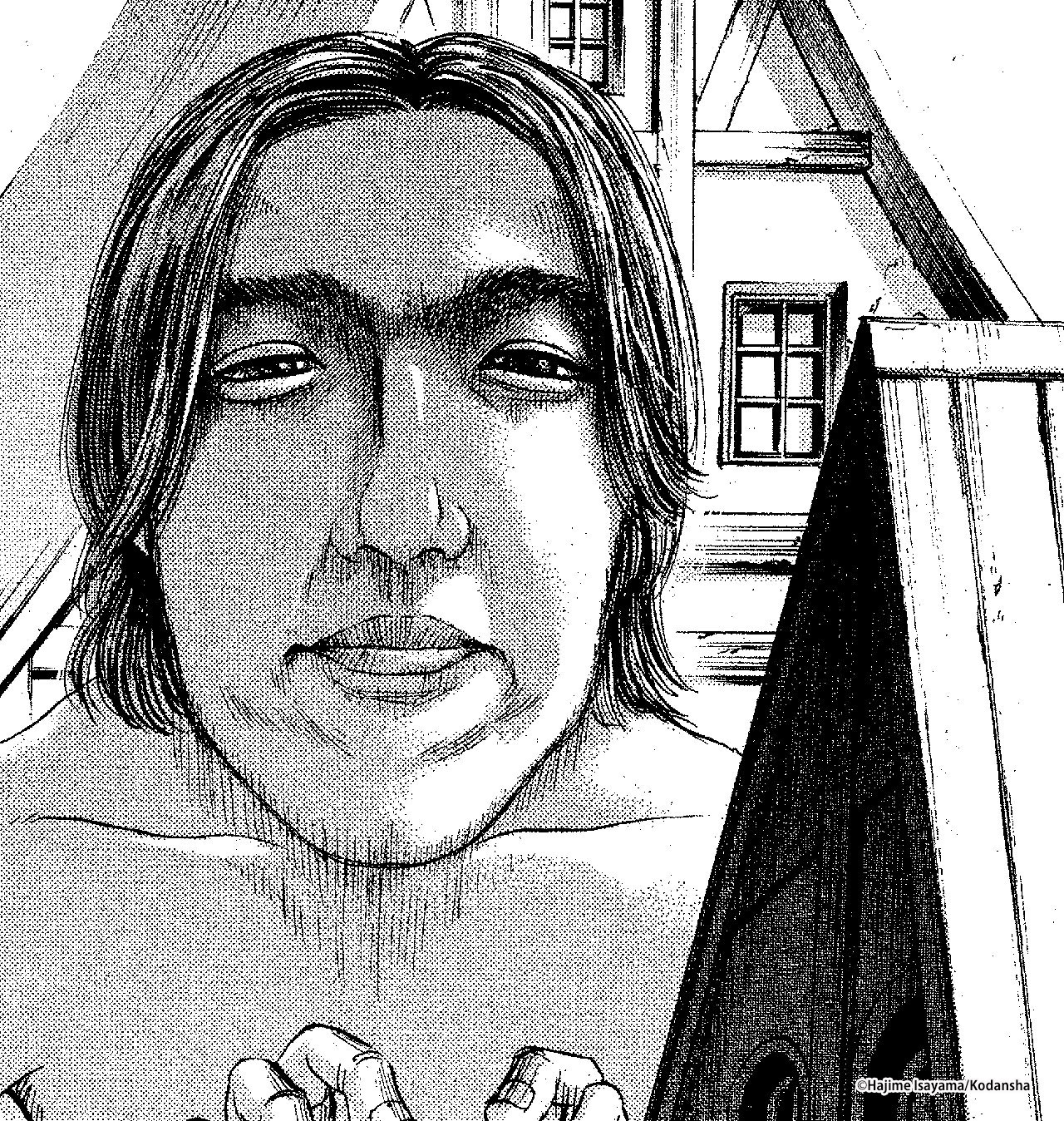
The titan modelled after the Attack on Titan anime director, Tetsurō Araki.
―― Of the titans you’ve drawn, do you have a favorite kind?
Isayama: I liked the titan that was waiting for Reiner in volume ten, when he went down the tower and opened the door. I’m prone to drawing titans haphazardly, actually, but I realized that scene wouldn’t work if the titan didn’t seem uncanny and scary, so I put everything that I had into drawing it. Furthermore, the meaning was deeper since I put so much effort into drawing the titan in a situation where I couldn’t afford to be sloppy.
Put aside old values and advance toward a reconstructed conclusion
―― Changing the topic, but, compared to other works, Attack on Titan seems like it has overwhelmingly more side stories and product collaborations. Do you, Mr. Kawakubo, and the editing department have any specific intentions doing that?
Kawakubo: The collaborations are developed consciously and proactively. And that’s because up until about a decade ago, manga sold based on how interesting they were, even if no one else was really talking about them, but that’s not at all the case today. I think this is because we’re flooded with entertainment products that act as competition, but if you try to write that off as “just how things are,” then there’s really no point to the having a head editor or publisher, right? We think about how reach a scale of audience appropriate to how interesting the manga is. Developing collaborations is one part of that plan. This might sound rude to say, but, since I’m looking after Mr. Isayama’s most favorite ‘toy,’ I feel like I shouldn’t play with it [laughter].
―― Have any collaborations or marketing campaigns left an impression on you?
Isayama: The life-size titan they unveiled at Universal Studios Japan. I had established that they were fifteen meters [fifty feet] tall, so I was impressed they were able to make it life-sized. At that rate, maybe I should have set their height to twenty-five meters [laughter]!
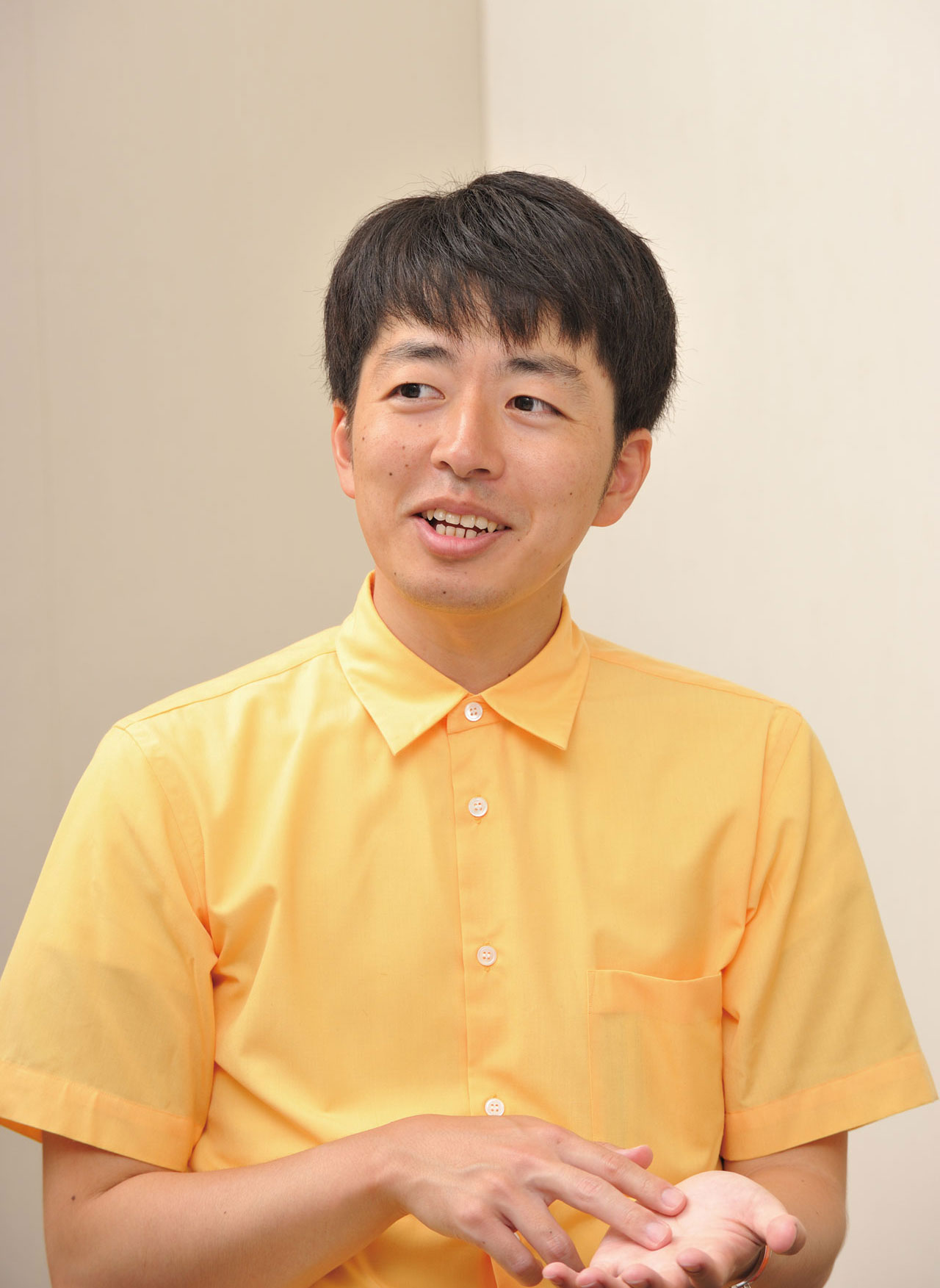
Head editor Shintarō Kawakubo
―― What if they come out with a titan even bigger than that one?
Kawakubo: There’s only the fifty meter-plus [164 feet-plus] Colossus Titan left, but I think that one might be impossible to replicate [laughter].
Isayama: In terms of collaborative products, I have at home this high-end Colossus Titan figurine that was around 400,000 yen, and I could stare at it all day. I’ll never get tired of it. The mold was so cool that the next time that the Colossus Titan appeared in the manga, I tweaked the design to better match the figurine.
―― I had no idea! On that note, what is your favorite thing to work on when you’re making Attack on Titan?
Isayama: Lately I’ve been enjoying the drawing. Like, the designing and perspective. Thinking about the sense of distance between the characters and the focal point and seeing the scene I imagined come to life on the page is the best feeling, but this is all while my assistants are helping me, of course.
―― What scene made you feel like that recently, or did you put all your effort into?
Isayama: It was a design, rather than a scene; the Cart Titan in chapter ninety-two that was wearing an iron mask. I was blanking on the design until two days before the deadline, and the resulting iron mask was a reference to a mask from a one-shot manga I first contributed to in high school. Back then, I was always drawing masks, like it would have killed me to stop, but fortunately it was the key to my artist’s block.
―― Why just masks [laughter]?
Isayama: I was inspired by Berserk [by Kentarō Miura], but I also just loved masks.
―― Oh, I see.
Isayama: The main reason I liked Berserk was in the design components, and that I thought Griffith’s mask was cool, too. Therefore, wouldn’t you naturally want to have Guts wear a matching mask? That’s why I was doodling Guts’ mask design for fun. By sheer coincidence, right after chapter ninety-two was published, The Berserker Armor episode of Berserk came out. Moreover, since it resembled the mask I had thought of, I was overjoyed to feel connected to Mr. Miura for a brief moment [laughter].
―― As the head editor of Attack on Titan, Mr. Kawakubo, what are you doing now that you enjoy?
Kawakubo: This is kind of lame, but I like reading the rough drafts for the first time. What I’m about to say is completely my own subjective impression, so it might be a little rude, but… It’s like I have a story-making machine by the name of Hajime Isayama [laughter]. I just throw in whatever I feel like, one after the other. Key words, ideas, garbage opinions, questions, whatever. And after a minute, it spits out an amazing story [laughter]. I don’t mean that there’s an equation where I input A and get B out of it, and whatever I threw in doesn’t necessarily have any impact on the result. But, either way, it puts out a rough draft for some kind of story. From Mr. Isayama’s perspective, he goes through hell in order to come up with things, but to me, it’s amusing, it’s always a surprise.
―― That sounds really nice. Okay, what I’d like to touch on now at the end is plans for the future. In the most recent volume, the world’s mysteries were explained and we approached a new development. In terms of the direction and the path of the story, has everything gone just as you had planned from the start?
Isayama: Not at all. We’ve diverged significantly from how I thought it would end in the beginning. Thanks to how much everyone has grown to love the characters, and how popular Attack on Titan has become among so many people, I decided that the conclusion I had originally planned for would be totally wrong.
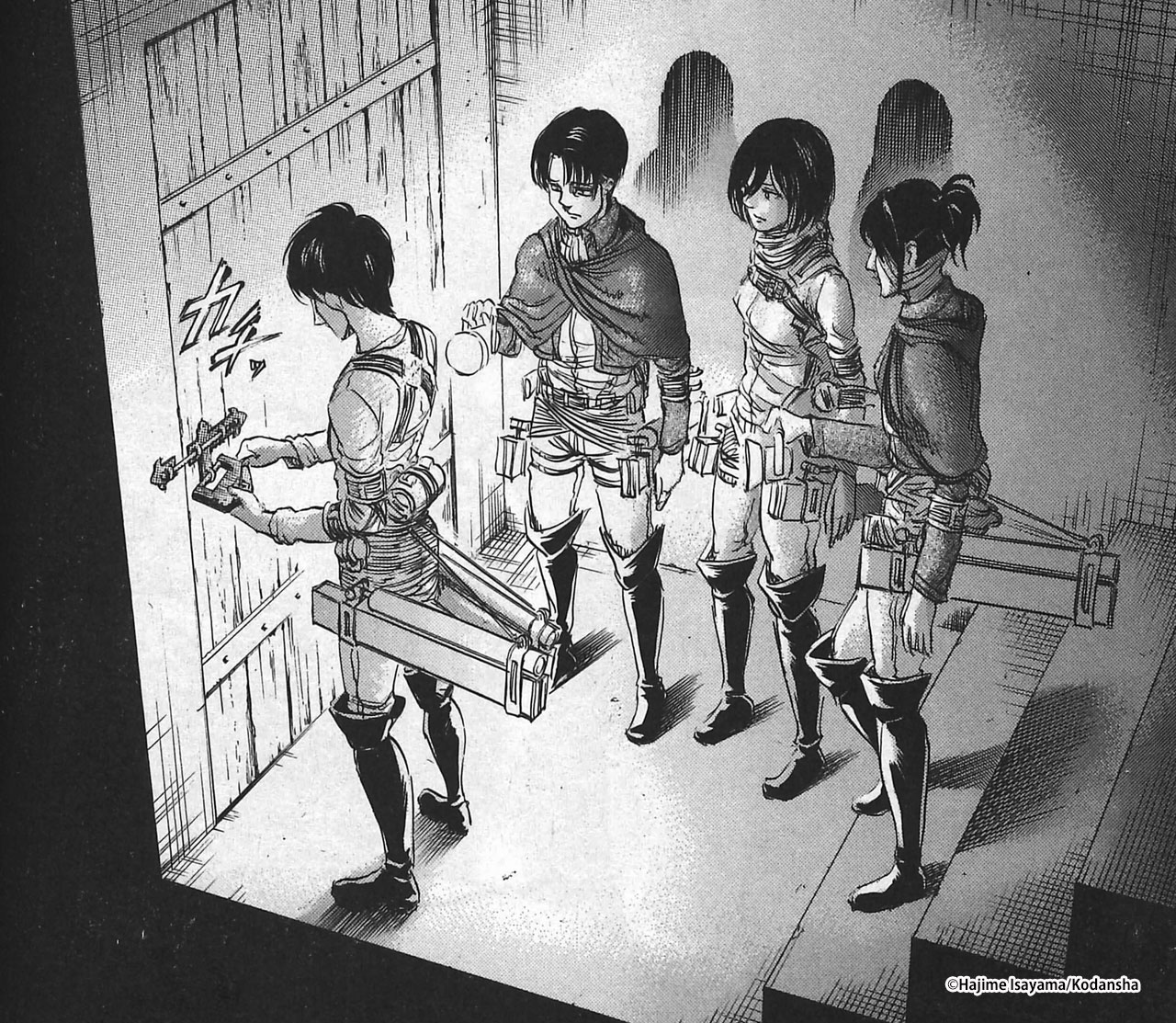
―― Meaning, it could have met an end like in Muv Luv.
Isayama: At the beginning of publication, my urge to make something shocking outweighed any desire to make readers happy. I don’t feel that way anymore, though, and have instead come to think that I should take a more professional approach.
―― What made you change your mind?
Isayama: When I saw Guardians of the Galaxy, even though the story ends in a completely predictable way, when you carefully bring together the characters’ emotions and the considerable originality of the visuals, the story does a 360 and you feel like you’ve just witnessed something amazingly original and fresh. So, after that, with one of my possible endings for Attack on Titan already in sight, I put aside my old values and reconstructed the conclusion.
―― So, even though you have a choice for how you would approach it, you have a clear vision for how it will end.
Isayama: No, I’m still being inspired by all sorts of media when it comes to that. Lately those have been series like Breaking Bad and Game of Thrones, but those series use the inductive method, they start at the end and put the story together in reverse order. And because of that, early on they were tedious and vague, but conversely, come the end, they’re suddenly very exciting. In contrast, most manga serializations use the deduction method, which gives the impression that what you are reading is happening in real time, and you experience the interesting moments like they’re impromptu. With Attack on Titan, I want to take the benefits of each of those methods, and perhaps that’s greedy of me, but that’s where my mind is at.
―― That will be quite the challenge.
Isayama: Now that I said it so flippantly, I’m already doubting myself [laughter]. But honestly, I think I’d like to fumble my way in the dark to the end.![]()


